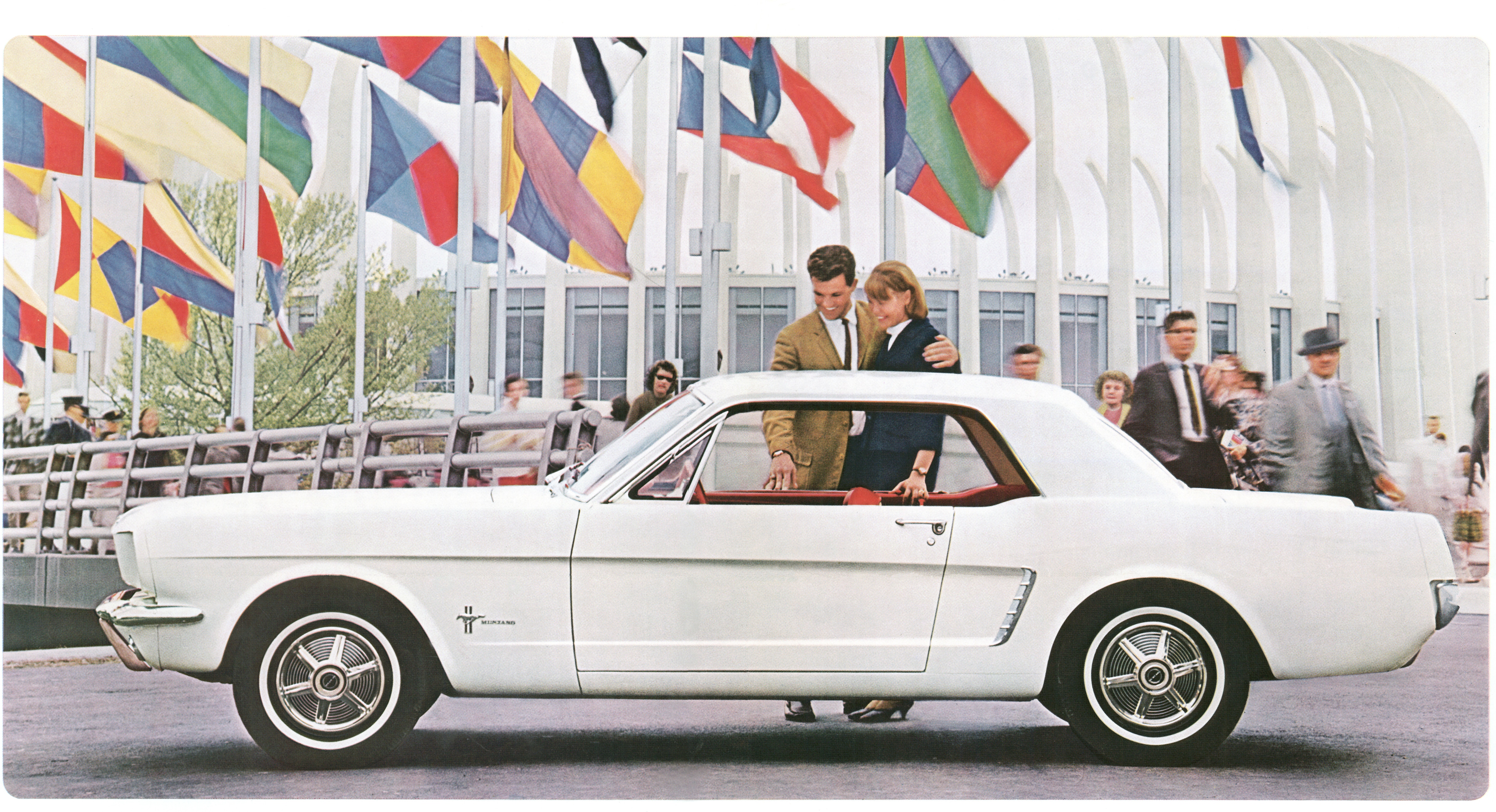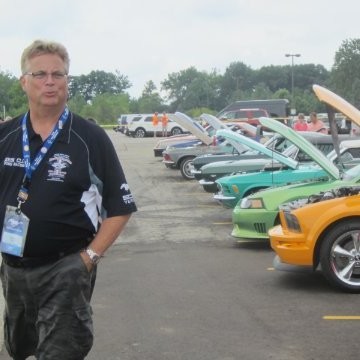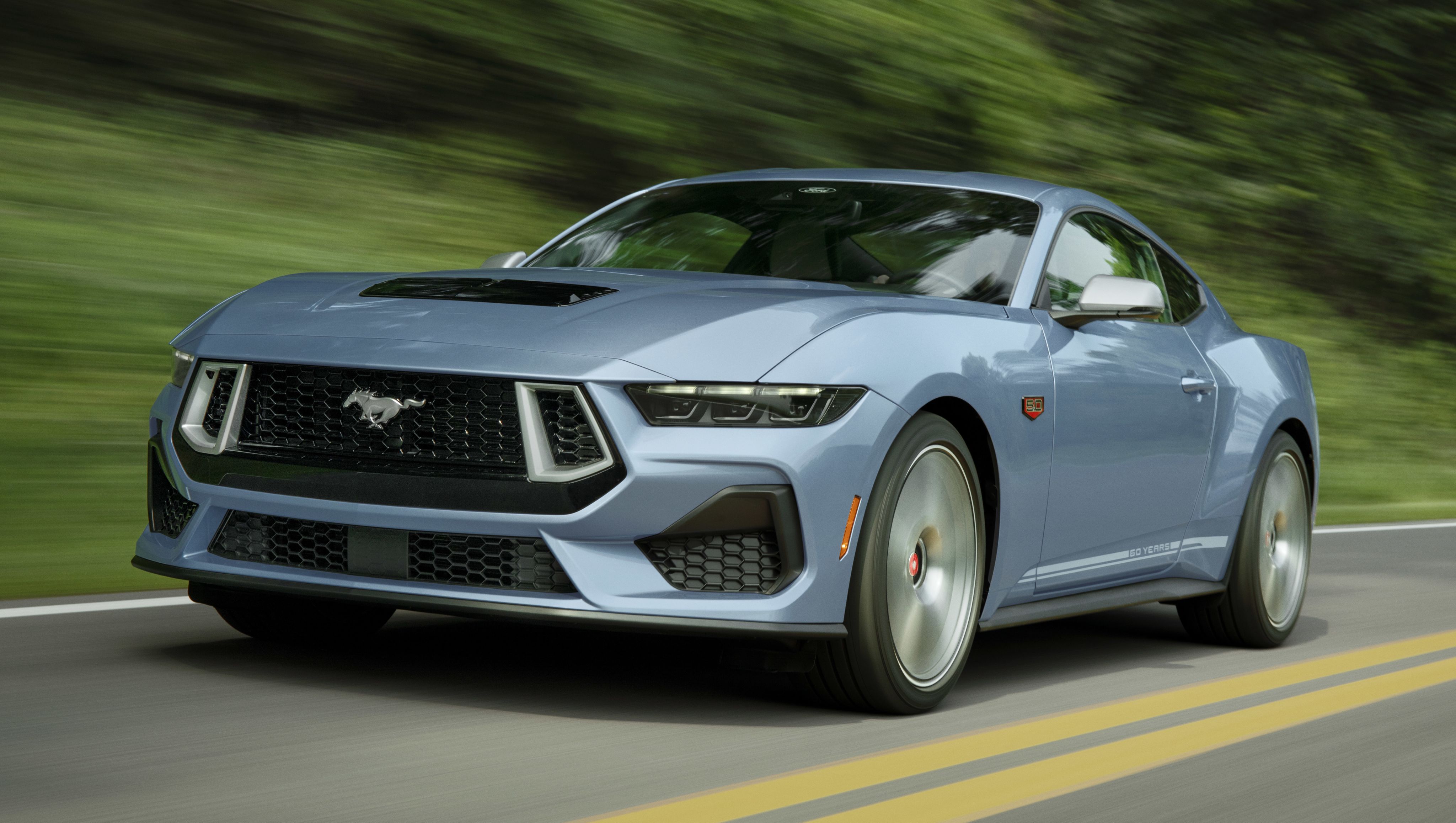
More Than a Machine



There's a lot to be said about the Mustang® vehicle, but nearly everything you need to know can be encapsulated in a simple fact. It’s one whose subconscious meaning is so burned into the American consciousness that it has been — and often still is — construed as our birthright.
It’s one so ingrained in us that it’s easy to take for granted, even as it adorns the front of every single one of the globe’s most popular sports cars.
The pony gallops west.
This may not seem like a big deal at all, but, as with most things, its significance comes down to the details.
“The Mustang is a wild horse, not a domesticated racer.”Then-Ford CEO Lee Iacocca


During the summer of 1962, California-based race car constructor Troutman and Barnes was assembling a running version of the Mustang 1 concept while Ford designers gathered in Dearborn to evaluate sketches for the vehicle badge. With the name already in their pocket, their goal was to design something that reflected both the equine inspiration for the concept and its American heritage.
Since the early days of American history, racetracks have featured horses running counter-clockwise and appearing to run to the right — a decision that was initially meant to stick a finger in the eye of British tradition that had seen horses running clockwise on the track. This counter-clockwise tradition continued even as auto racing boomed and motorsports tracks were constructed.
Notably, designer Phil Clark had for years been sketching out ideas for a vehicle badge inspired by a galloping horse. He'd almost exclusively drawn it facing left.
And while Ford itself is no stranger to racing — in fact, the company was founded on the racetrack — there was something about the leftward-facing horse presented in a full gallop that perfectly captured the independent spirit of the vehicle Ford was getting ready to pitch to the public.
“The Mustang is a wild horse, not a domesticated racer,” said then-Ford CEO Lee Iacocca.
Even the name “Mustang” emerged as the frontrunner “because it had the excitement of the wide-open spaces and was American as all hell,” said Frank Thomas, a J.Walter Thompson account executive who helped compile the research around the name.
With Ford’s lineup dominated by sedans like the Falcon™, Galaxie™, and Fairlane™ — what Iacocca famously referred to as "the living room on wheels" — the Mustang was a radical departure from the norm.
Debuting at the New York World’s Fair in Flushing Meadows’ Corona Park in Queens, it was an instant sensation, capturing the imagination of drivers young and old. Very quickly, the Mustang came to symbolize a promise of freedom, a ticket to the open road for a generation yearning to break free.
In April 1964, the Mustang would be the first car ever to be simultaneously featured on the cover of Time Magazine and Newsweek. It would go on to sell over 1 million units in its first two years.
Its success was proof that Ford recognized the need for a vehicle that would appeal to a younger demographic, free of spirit and independent of mind. This would be a new kind of car built for them — fun to drive and affordable to own. With a sticker price of just $2,368, the Mustang was truly the car for the youth market, putting freedom within reach for millions of Americans.
While the Mustang brand very intentionally evoked a feeling of untamed freedom, Ford was not shy about its belief that the vehicle’s wild performance capabilities could trample even the most pedigreed competitors.
“You’re going to see Mustangs whipping over rally courses, road courses and tracks in just about any place that anyone wants to test our mettle — either in Podunk, USA, or Paris, France,” said Frank E. Zimmerman, Ford Division Special Vehicles manager, in April 1964.
Later that year, he backed up those words.
In September, Ford entered the Mustang in the eight-race, 10-day, 3,500-mile Tour de France, an event which had previously been dominated by Jaguar. Alan Mann Racing prepared the vehicles that took a 1-2 finish in the touring class, establishing a legacy of success in motorsports that continues today.



Since then, the Mustang reputation for white-knuckle driving experiences has only grown. The '80s saw the debut of the Mustang SVO, a turbocharged variant that pushed the boundaries of performance and technology. With its aerodynamic styling and advanced suspension, the SVO model was a glimpse into the future of the pony car. It set the stage for the high-tech marvels to come. In 1999, the Ford Special Vehicle Team’s SVT Cobra™ became the first Mustang model to feature an independent rear suspension from the factory.
Its reputation continued to grow with the first 1965 “Shelby GT350.” This vehicle began life on the Dearborn assembly line but got its chops at the Shelby American shop in Venice California, where it was tuned to 306 horsepower and loaded with uprated parts. With its iconic Wimbledon White paint job and Guardsman Blue racing stripes, the Shelby GT350 “R” saw huge success on the track with legendary driver Ken Miles at the wheel, claiming the title of SCCA B-Class champion for 3 years straight. Ken Miles’ GT350 sold for $3.5 million, making it the most expensive Mustang ever sold.
Today, the relentless pursuit of performance continues on and off the track. The Mustang GTD is a track-ready, street legal “race car for the road” inspired by GT3 race cars. It pushes the envelope of automotive engineering with features like modifiable racing suspension, active aerodynamics, titanium parts and an 815-horsepower supercharged 5.2-liter V8 powertrain, all woven in carbon-fiber bodywork and delivering near 50:50 weight distribution.
All this innovation became readily apparent when the Mustang GTD became the first sports car from an American automaker to set a sub-7-minute lap at Germany’s iconic Nürburgring track.
Shortly afterwards, Ford returned to Nürburgring to record an even faster time.
The Mustang has proven itself time and again as a formidable competitor, earning victories, fanfare and accolades from the racetrack to the drag strip. It continues to double down on motorsports globally, with a program that claimed a podium spot at the 24 Hours of Le Mans this year, NASCAR victories and more.
Yet we're still only scratching the surface of the Mustang story, one that’s still being written today. It’s a story so vast that it was worth building an entirely new experience to tell it. On November 8, the opening of American Icon: A Mustang Immersive Experience will give visitors a chance to not only learn about the Mustang brand but also feel the impact it has had on people, culture and society.
Just like its namesake, it's going to be a wild ride.
Mustang author and columnist John Clor is the enthusiast communications manager for Ford Racing.